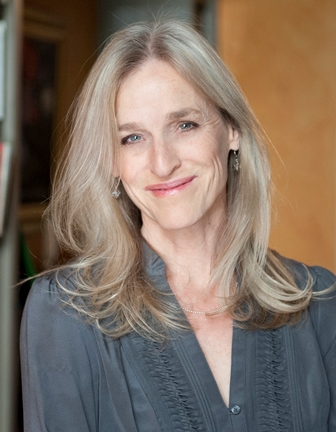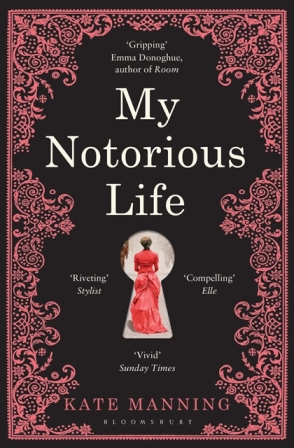Author Kate Manning gives her advice on writing historical fiction and creating strong female characters.

Readers seem to have a voracious appetite for a species called “the strong female character.” Where does this elusive heavily-muscled creature reside, and how does a writer hunt and capture such a class of heroines on the page? One place to search is the attic. Excavating little-known female figures from the headlines, diaries and letters of yore yields fascinating, forgotten stories about women’s strength in all its varieties, from rebellion to endurance.
Because these stories are so often left out of textbooks, novelists have an important part to play in depicting the lives of women in the past. And luckily, unlike history or journalism, fiction is not beholden to fact in order to get at truth. A novelist can borrow, embellish, twist and invent, using a real life for the purposes of story. For me, trying to decide what responsibility a novel owes to fact was not a question of faithfully “fictionalizing” the life of a long-dead, real person, but one of deciding which aspects of that life I wanted to steal for a made-up character.
My Notorious Life is based partly on the life of a 19th century Englishwoman from Gloucestershire named Ann Trow Lohman, who emigrated to New York in 1831. She was frequently excoriated in the press and in trouble with the law. I liked the torn-from-headlines, rip-roaring tale that her trials provided. But I didn’t want to write a novel just about her, and didn’t want to be limited by the few details known about her life. So I looked at her story with the cold eye of a grave-robber, taking what was useful for my own fictional purposes, and handing them to a protagonist named Axie Muldoon.
Axie got Lohman’s diamond earrings, her Fifth Avenue mansion, her red-feathered hat, her fancy carriage with matched horses, her medical practice, her alias, her patients’ case histories, her troubles with the law, her preening vanity and insecurities, her luxurious taste in home furnishings, her letters to the editor, her anger, her advertisements in the back of the penny papers, her portrait as a “Hag of Misery” in the news, and many other details of her life, down to the words she was said to utter outside a courthouse. “What a lot of little lawyers! They buzz about me like flies!”
The lawyers are in the story, too, as they were in Lohman’s, for she became an infamous midwife who practiced in Victorian New York for forty years, using the alias Madame Restell, sometimes referred to as “Madame X.” She got fabulously wealthy selling “lunar tonic for the relief of female complaint,” a potion known to end an unwanted pregnancy by causing a miscarriage. She also delivered babies, dispensed birth control, placed infants for adoption, and performed pregnancy termination for those women who wanted to limit the size of their families or who were - for reasons of health, shame, emotions, or economics - unable to bear and raise a child. She provided birth control devices and information in a time when both were taboo, and scarce. Axie does all these things, too.
Today we might say Lohman was an early pioneer of the reproductive rights movement, right up there with Marie Stopes or Margaret Sanger. “Pioneer,” however, was not what she was called in her own time. Hardly. And here’s where I looked at Ann Lohman not with a cold eye, but a warm one, sensing from the evidence at hand how very misunderstood she was in the 1800’s, how brave and defiant, or perhaps naive, she must have been, to carry on taking risks and flouting convention as she did, for decades. And so in my novel, Axie Muldoon is a heroine motivated by mercy, if not money.
Not much is known about Lohman’s origins, or how she learned her skills, but reporting the known is a problem of biography, not fiction. My Notorious Life is about Axie and I could not write with Lohman-fact-checkers watching over my shoulder. It was liberating to change her name, to invent a childhood. In the novel, Axie is not English, but the daughter of impoverished Irish immigrants. She starts as a New York city street waif and gets swept up in the Orphan Train movement of the 19th century, a project that sent 250,000 city kids out West, to find new country families. This movement is a little-known chapter of the past--perhaps because it is about children, who are also left out of history books. I used the Orphan Trains as a device to invent misadventures for Axie befitting a picaresque heroine.
Invention frees a novelist to re-evaluate women of the past, who, if they were in stories at all, are usually characterized in stereotype, as witches or angels, sluts or sainted mothers, virgins or lunatics. Ann Trow Lohman, in her day, was called “A Hag of Misery,” but in My Notorious Life, Axie Muldoon calls herself an Angel of Mercy. She devoted her time to the delivery rooms of laboring women, the shaming rooms of suffering girls, to do what she could to help. Yet she’s plagued by misgivings, self-doubt, and anger. So, is she “strong?”

The strength of female characters resides not in their imperviousness, but in their indelible voices and stories, ones that impress themselves upon us and linger long after the last page. They are no different than strong male characters that way. What readers are looking for, perhaps, are examples in fiction of women who stand up to authority, who flout convention, who defy stereotype, despite risks, danger, or fear. These are characters that contradict the images we have of women as passive, delicate, downtrodden doormats. We know those images are distorted. Looking to history, a writer will find a pantheon of female heroines whose lives are profiles in courage, and whose examples of perseverance surely called for super-powers. The real question is whether a writer can craft a story that is not just propaganda for some equally distorted idea of muscular female power, but which portrays the complexity and nuance of the female experience without glossing over the very real hardship women endured.
As for what fiction owes to hard fact, it seems to me that there are no rules about that. A novelist is free to pilfer at will. Even with a just-the-facts-ma’am account of a life, the truth of it is always a slippery fish; just when you think you’ve caught it, it slips off the hook. “A novel,” writes the critic Andrew DelBanco, “is beholden to no external measure of truth, it must only be true to itself.” And I would add that, to be strong, a female character need not be heavily-muscled, wearing a cape, defying convention, or carrying a sword, although, of course, she could be. I often wondered, writing, how the characters whose lives I robbed would feel about what I made of the loot. My guess is that Ann Trow Lohman would be mortified, in a publicly righteous way, but secretly delighted and glad to be in the public eye once more, transformed from villain to heroine in the pages of fiction.
My Notorious Life, by Kate Manning is available to buy in paperback here. For more from the author, take a look at her website.
Find out more about titles and buy the latest releases from Kate Manning at Bloomsbury.com
AUTHOR PHOTO CREDIT: Anne Day
Comments